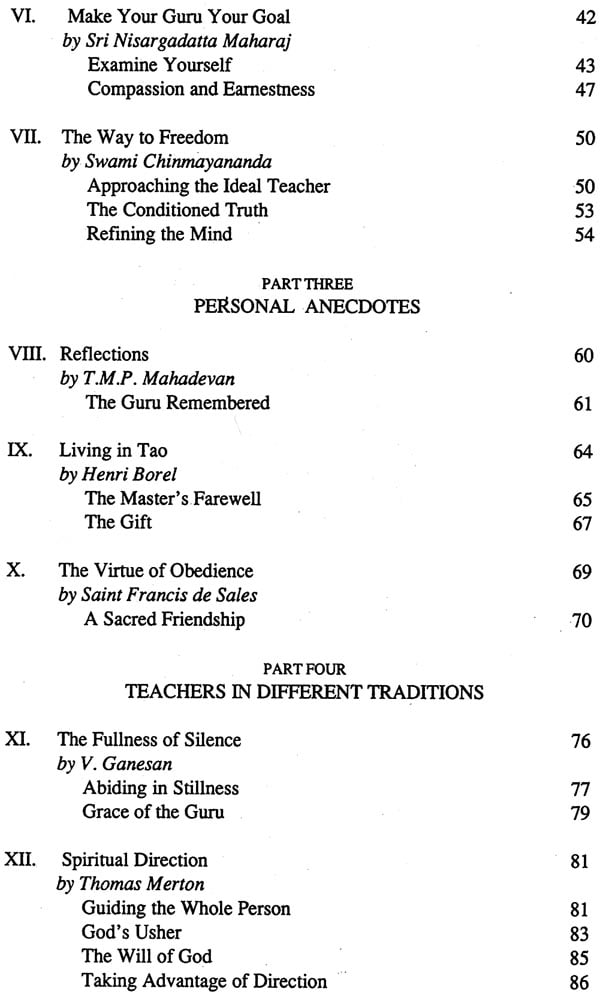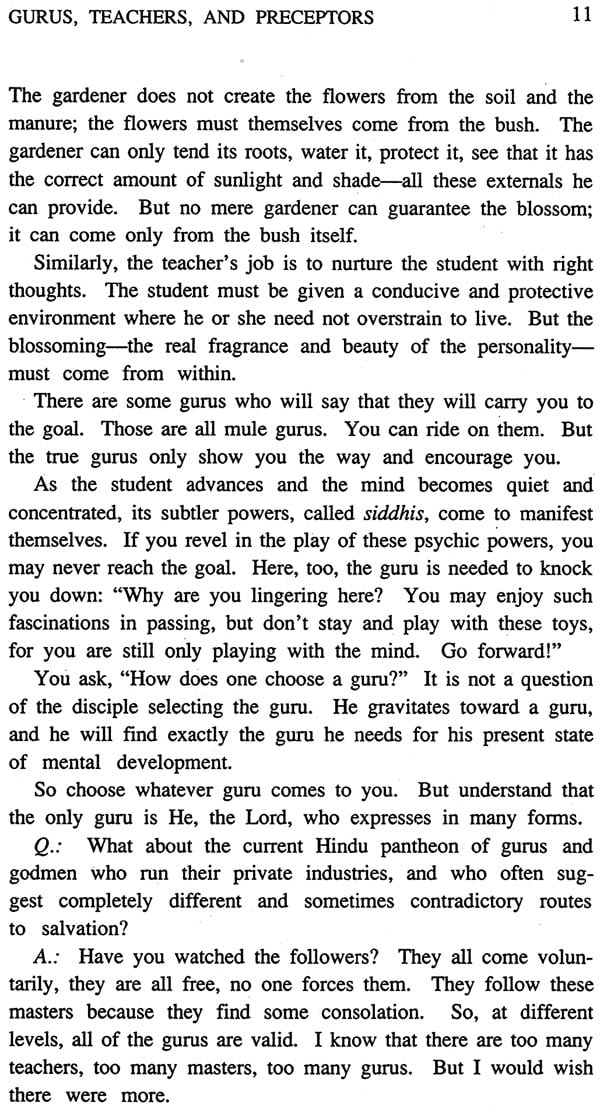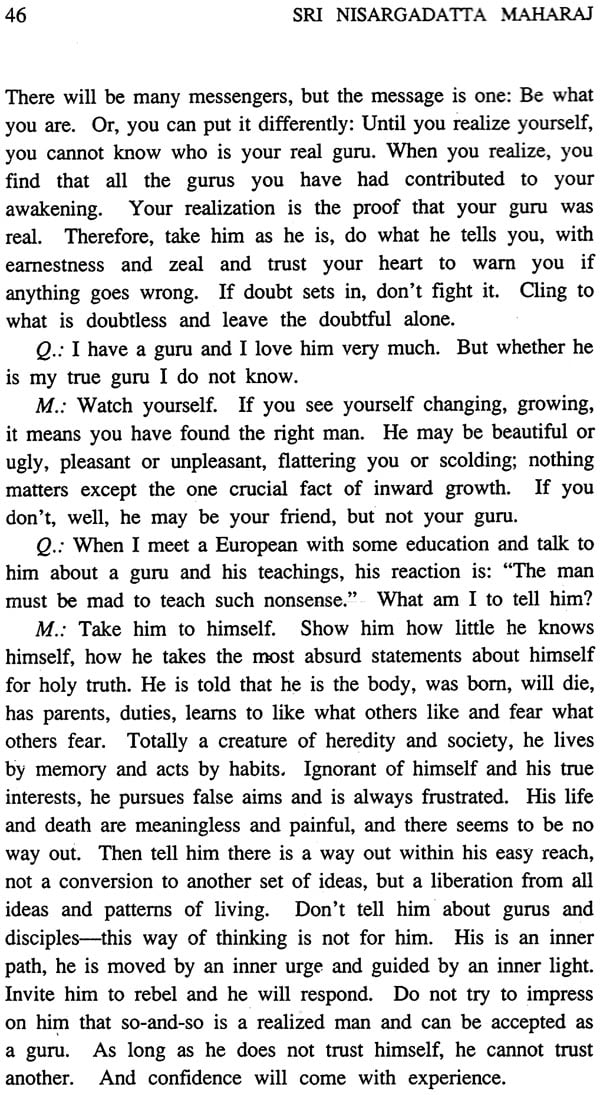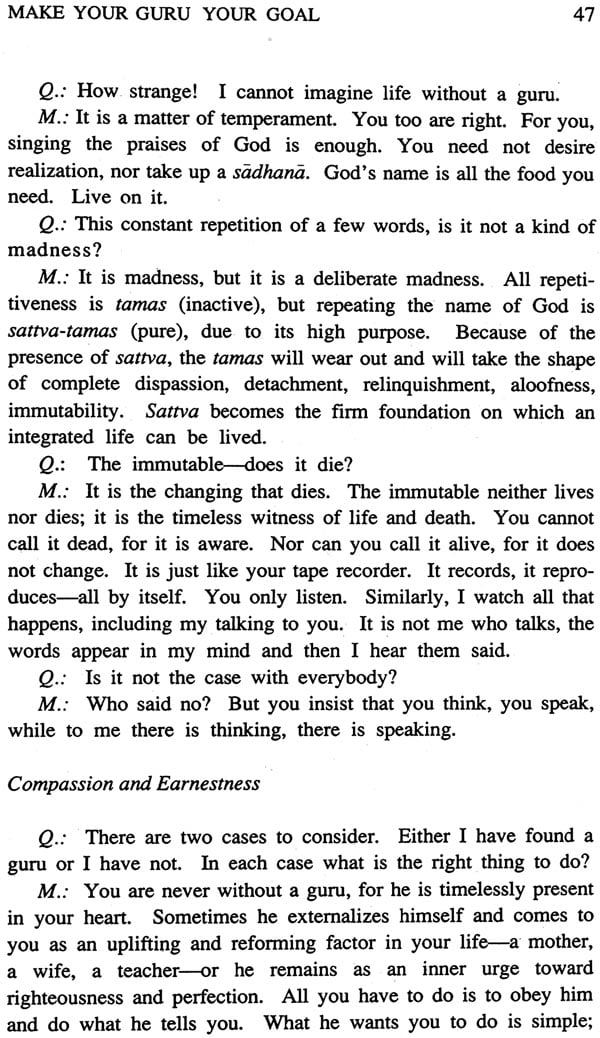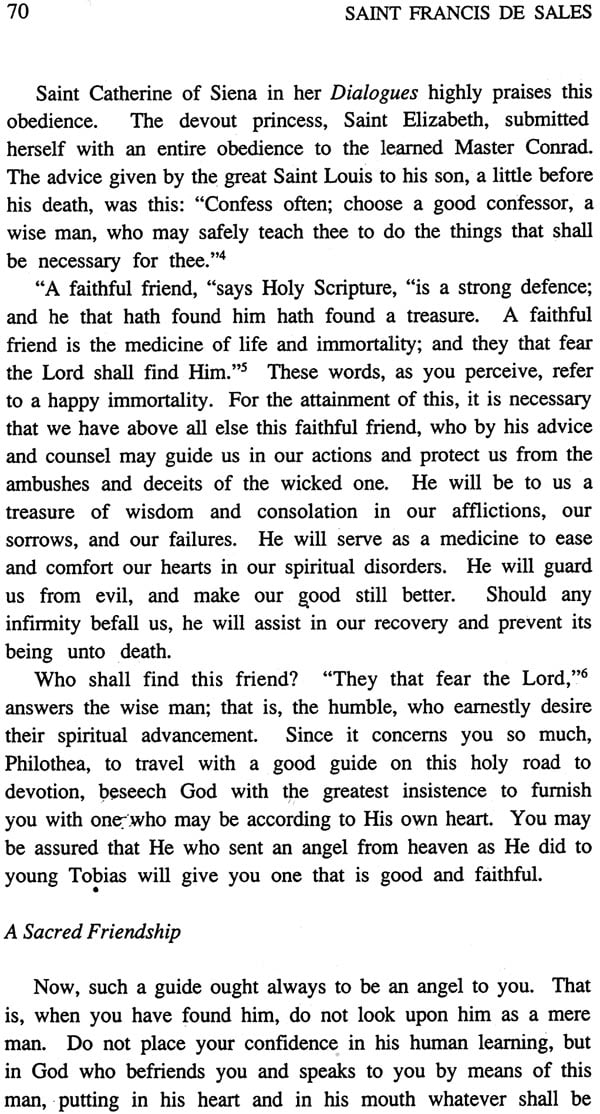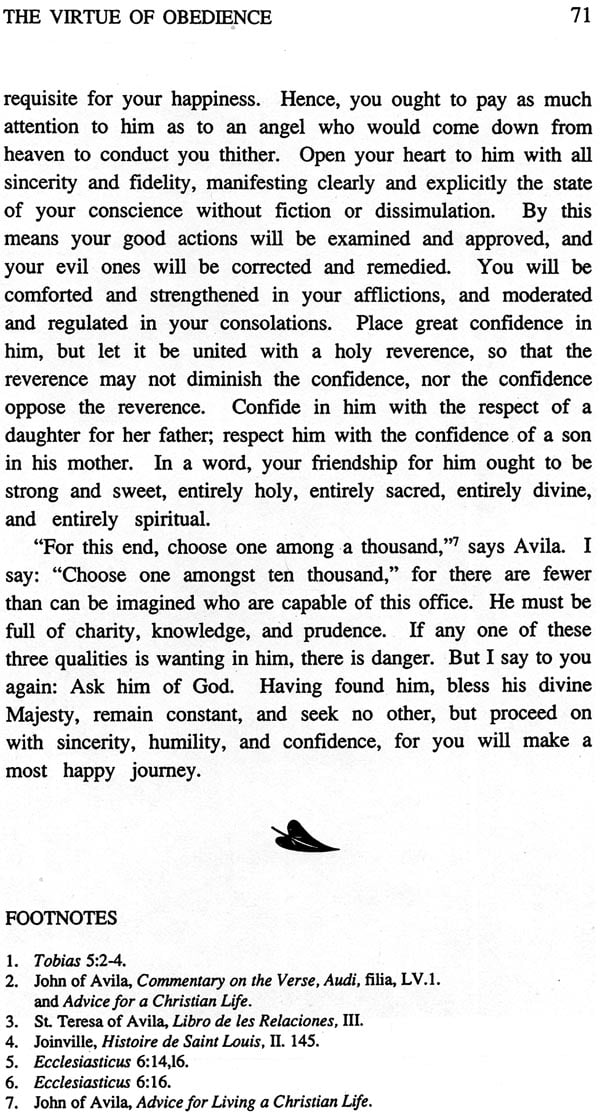
The Essential Teacher
Book Specification
| Item Code: | NAS229 |
| Publisher: | CENTRAL CHINMAYA MISSION TRUST |
| Language: | English |
| Edition: | 2013 |
| ISBN: | 9788175971288 |
| Pages: | 104 (4 B/W Illustrations) |
| Cover: | PAPERBACK |
| Other Details | 8.50 X 5.50 inch |
| Weight | 130 gm |
Book Description
Throughout the ages, the significance of a guru or spiritual guide in a seeker’s life has been questioned and disputed. This 1s especially true today, with the fostering of self-reliance and independence in a rational, intellectual society. It is because of our demands for a logical explanation and scientific approach to all pursuits that the following questions arise:
- In the pursuit of Self-awareness, is a teacher absolutely necessary?
- When so many profess to be teachers, how do we recognize or find a true spiritual guide?
- Once found, how can we attune ourselves to the teacher in order to accelerate our progress?
In The Essential Teacher, these and other critical questions are addressed by some of the greatest masters, saints. and teachers from the past and the present, extracting indispensable keys to the process of Self-perfection from traditional disciplines.
These are the days of both guru worship and guru damnation. Those who follow a guru often do so blindly, like the dumb cattle driven in a herd. They lack enthusiasm and ignore intelligent evaluation when listening to advice or following a path.
On the other hand, there is a growing majority of blasphemers who are to be congratulated, for their calumny is rightly directed against the false pretenders and professional priests. Gurudom has become a very lucrative business, requiring no investment, and promising great gain.
But, between. these two extremities of opinions, somewhere lies the truth. The Hindu scriptures are amply clear in their definition of a true guru: one well-versed in the scriptures and also well-established in Truth.
To students of Vedanta the guru is the embodiment of their goal. The guru is nothing but pure Consciousness, absolute Bliss, and eternal Wisdom. Anyone who can elicit a continual feeling of faith and devotion in us is our guru. If we expect a guru to transform us to Godhood by a touch, we shall wait in vain.
Self-redemption must come ultimately from ourselves. The external props, such as temples, idols, and gurus, are all encouragements and aids. They must be intelligently used to help build up inner perfection. With inner purity, the student comes to be guided more and more by the intellect. In fact, the real guru is the pure intellect within; the purified, deeply aspiring mind is the disciple.
Thus the most important thing is our own self-effort. Purify the equipment, and the guru necessary for our next stage of growth shall reach us. This is the eternal law. Hour by hour, the world around us is so ordered as to give us the necessary dosage of experiences. What is essential for the next stage of growth is always provided for by the all-witnessing and merciful Lord.
When we come to deserve a master, he shall reach us. Stick to spiritual practices. Be good, be kind, be sincere. Refine the motives by building life upon the enduring values of love, mercy, charity, and purity. Through constant remembrance of the Lord rise in spirituality. Gurus shall from time to time reach such determined and sincere seekers.
The Sanskrit word guru is defined as "the dispeller of ignorance," where gu is "ignorance" or "darkness" and ru is "the remover." A guru is a Spiritual master who can help us to rediscover our essential nature by teaching the true spiritual life. He thus represents the light that removes darkness.
The concept of the guru can be traced back to the ancient Vedic period; in the Upanisads, the teacher is presented as being indispensable to Self-knowledge. Other religious traditions also emphasize the need for a teacher for those who wish to advance spiritually. The names for teachers are different: spiritual director in Christianity, tzaddikim in Judaism, startsy in the Russian Orthodox tradition, and murshid in Sufism. Yet all these guides performed the same task; namely, leading the souls in their care to the place they themselves had reached.
Due to the very subtle nature of the knowledge to be transmitted— which transcends mind and intellect—a deep personal relationship is required in order for true unfoldment to take place. If the teacher is not perfected, this personal relationship could be misused. This is perhaps the reason why the word "guru" often creates a negative reaction in society today. A true teacher never abuses the relationship, because he is free, he has nothing to gain, and he teaches solely out of love for mankind.
Yet how can we in our present state of imperfection recognize a true teacher? And why is a teacher necessary? It is these fundamental questions that this issue addresses.
Part One examines "The Nature of the Guru." The questions of who and what is a guru are dealt with in the articles by Vedantic masters Swami Chinmayananda, Swami Sivananda, and Swami Vivekananda.
J.R. Puri concludes Part One with a number of quotes by Guru Nanak of the Sikh tradition, who focuses on the importance of a living master when examining the question: How can we love that which we do not know?
Tarthang Tulku, head Lama of the Tibetan Nyingma Institute, begins Part Two, "Transmission of Knowledge," by pointing out the importance of the personal teacher-student relationship, which forms the basis of traditional teachings. Nisargadatta Maharaj, a contempo- rary Advaitic sage, turns the responsibility of finding the right teacher back onto ourselves by saying, "Be the right man and the right guru will — surely find you."
In relating a dialogue with his own teacher, Swami Chinmay- ananda explains the difficulty of trying to convey the absolute Truth in terms of the conditioned Truth. He then tells us how we can prepare ourselves for the subjective experience of our own true nature.
In Part Three, "Personal Anecdotes," an encounter with one of the greatest sages in modern times, Ramana Maharshi, is told by the Vedantic scholar T.M.P. Mahadevan. Henri Borel, who helped bring the philosophy of Lao-Tse to the attention of early twentieth-century Europe, writes movingly of meeting with a Tao master. Saint Francis de Sales, a sixteenth-century saint, writes to Philothea—a name used to signify all souls in love with God—advising her that obedience to a true spiritual teacher will ensure a rewarding journey.
Part Four looks at "Teachers in Different Traditions." By giving detailed explanations of silence and stillness, the teachings of Ramana Maharshi are expounded upon by a disciple, V. Ganesan. Thomas Merton examines the spiritual director in the monastic environment and emphasizes the use of a natural and holistic approach to personal reintegration. Idries Shah, the foremost exponent of Sufism in the West, gives us an overview of the Sufi teacher and student. Baljit Kaur Tulsi describes in a Sikh allegory the process of a seeker awakening from his lower to his higher nature. The teacher assures the seeker that no matter how many wrong actions taint his past, if he holds fast and true to his ideal, he will get uplifted. And the guru concludes by showing the seeker that the true guru, the eternal guru, is God Himself, the Self within.
**Contents and Sample Pages**

